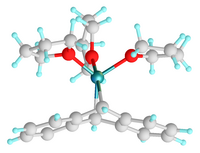Group 2 organometallic chemistry

Alright kiddo, let's learn about group 2 organometallic chemistry!
Firstly, let's break down the big words. Group 2 refers to a certain family of elements on the periodic table - these are beryllium, magnesium, calcium, strontium, barium, and radium. Organometallic chemistry is when we combine these elements with carbon-containing molecules to make new compounds.
So, what does that actually mean? Imagine you have some Lego blocks. You can take those Lego blocks and put them together to make something new, like a car or a spaceship. In the same way, scientists take these group 2 elements and combine them with carbon-containing molecules to make new compounds. These compounds can have all sorts of different shapes and properties, just like a Lego creation can look very different depending on how you put the blocks together.
One important thing about group 2 organometallic chemistry is that it can be very useful in making new chemicals and materials. These compounds can have special properties that make them useful in medicine, electronics, and many other fields. For example, some group 2 organometallic compounds are used in MRI machines to help doctors see inside the body.
Overall, group 2 organometallic chemistry is a way for scientists to take naturally occurring elements and combine them with other molecules to create new and useful compounds. It's like playing with Legos, but on a much, much smaller scale!
Firstly, let's break down the big words. Group 2 refers to a certain family of elements on the periodic table - these are beryllium, magnesium, calcium, strontium, barium, and radium. Organometallic chemistry is when we combine these elements with carbon-containing molecules to make new compounds.
So, what does that actually mean? Imagine you have some Lego blocks. You can take those Lego blocks and put them together to make something new, like a car or a spaceship. In the same way, scientists take these group 2 elements and combine them with carbon-containing molecules to make new compounds. These compounds can have all sorts of different shapes and properties, just like a Lego creation can look very different depending on how you put the blocks together.
One important thing about group 2 organometallic chemistry is that it can be very useful in making new chemicals and materials. These compounds can have special properties that make them useful in medicine, electronics, and many other fields. For example, some group 2 organometallic compounds are used in MRI machines to help doctors see inside the body.
Overall, group 2 organometallic chemistry is a way for scientists to take naturally occurring elements and combine them with other molecules to create new and useful compounds. It's like playing with Legos, but on a much, much smaller scale!
Related topics others have asked about:
